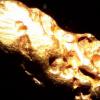Spearhead (red Sandstone) With Gold Inside?
-
Similar Content
-
- 3 replies
- 568 views
-
- 5 replies
- 639 views
-
- 22 replies
- 2,330 views
-
- 2 replies
- 1,515 views
-
- 8 replies
- 1,456 views
-
- 1 reply
- 758 views
-
-









Recommended Posts
Create an account or sign in to comment
You need to be a member in order to leave a comment
Create an account
Sign up for a new account in our community. It's easy!
Register a new accountSign in
Already have an account? Sign in here.
Sign In Now